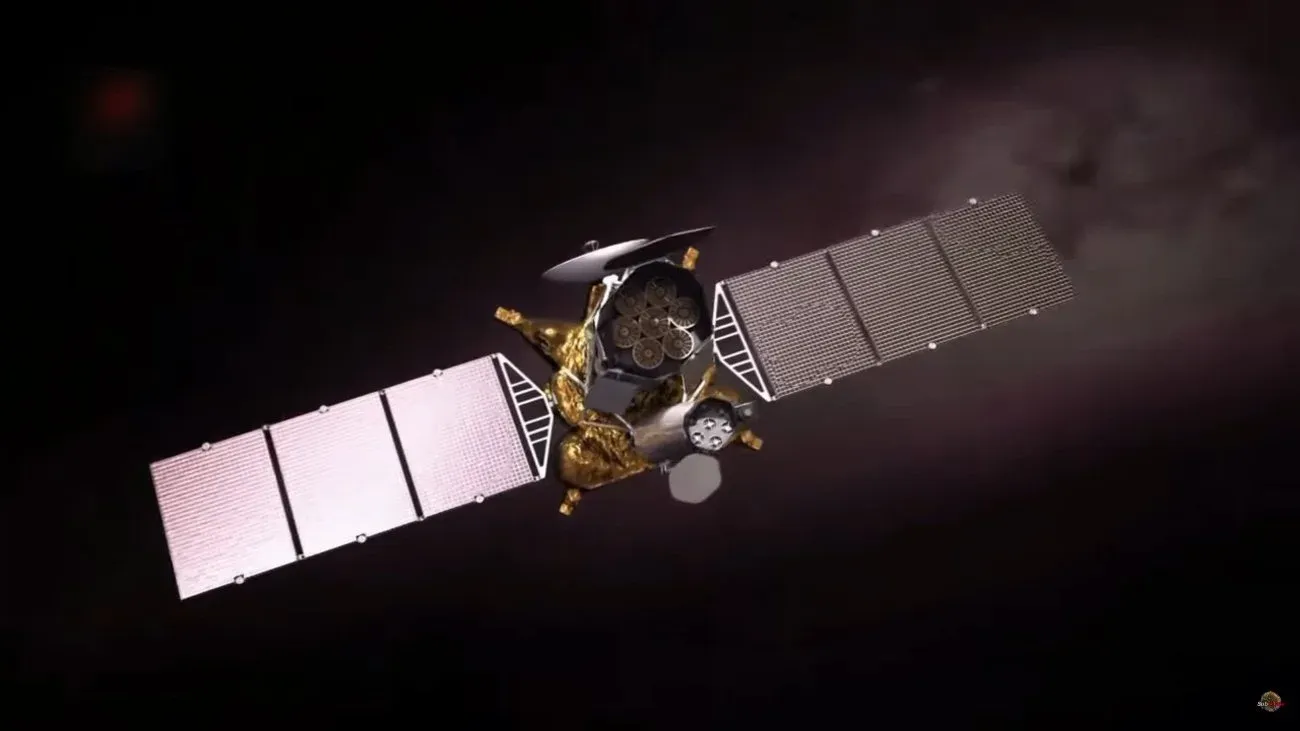About Spektr-RG(SRG):
- Spektr-Rentgen-Gamma (Spektr-RG, SRG) is a German-Russian high-energy astrophysics space observatory to study the universe in the X-ray range of electromagnetic radiation.
- It was launched on July 13, 2019, on a Proton-M rocket from the cosmo drome in Baikonur, Kazakhstan.
- It moves along a so-called halo orbit around the outer Lagrange point (L2) of the Sun-Earth system at a distance of 1.5 million km from the Earth with a period of about 6 months.
- A Lagrange point is a position in space where the gravitational pull of two large masses precisely equals the centripetal force required for a small object to move with them.
- Instruments:
- The primary instrument of the mission is eROSITA, built by the Max Planck Institute for Extraterrestrial Physics (MPE) in Germany.
- It is designed to conduct a seven-year X-ray survey, the first in the medium X-ray band less than 10 keV energies, and the first to map an estimated 100,000 galaxy clusters.
- This survey may detect new clusters of galaxies and active galactic nuclei.
- The second instrument, ART-XC, is a Russian high-energy X-ray telescope capable of detecting supermassive black holes.
It is intended to replace the Spektr-R, known as the “Russian Hubble”. Spektr-R was launched in 2011 to observe black holes, neutron stars, and magnetic fields, aiding understanding of cosmic expansion.
Q1: What are Pulsars?
Pulsars are rotating neutron stars observed to have pulses of radiation at very regular intervals that typically range from milliseconds to seconds. Pulsars have very strong magnetic fields, which funnel jets of particles out along the two magnetic poles. These accelerated particles produce very powerful beams of light. Often, the magnetic field is not aligned with the spin axis, so those beams of particles and light are swept around as the star rotates. When the beam crosses our line of sight, we see a pulse; in other words, we see pulsars turn on and off as the beam sweeps over Earth.
Source: New accreting millisecond X-ray pulsar discovered
Last updated on June, 2025
→ UPSC Notification 2025 was released on 22nd January 2025.
→ UPSC Prelims Result 2025 is out now for the CSE held on 25 May 2025.
→ UPSC Prelims Question Paper 2025 and Unofficial Prelims Answer Key 2025 are available now.
→ UPSC Calendar 2026 is released on 15th May, 2025.
→ The UPSC Vacancy 2025 were released 1129, out of which 979 were for UPSC CSE and remaining 150 are for UPSC IFoS.
→ UPSC Mains 2025 will be conducted on 22nd August 2025.
→ UPSC Prelims 2026 will be conducted on 24th May, 2026 & UPSC Mains 2026 will be conducted on 21st August 2026.
→ The UPSC Selection Process is of 3 stages-Prelims, Mains and Interview.
→ UPSC Result 2024 is released with latest UPSC Marksheet 2024. Check Now!
→ UPSC Toppers List 2024 is released now. Shakti Dubey is UPSC AIR 1 2024 Topper.
→ Also check Best IAS Coaching in Delhi
























